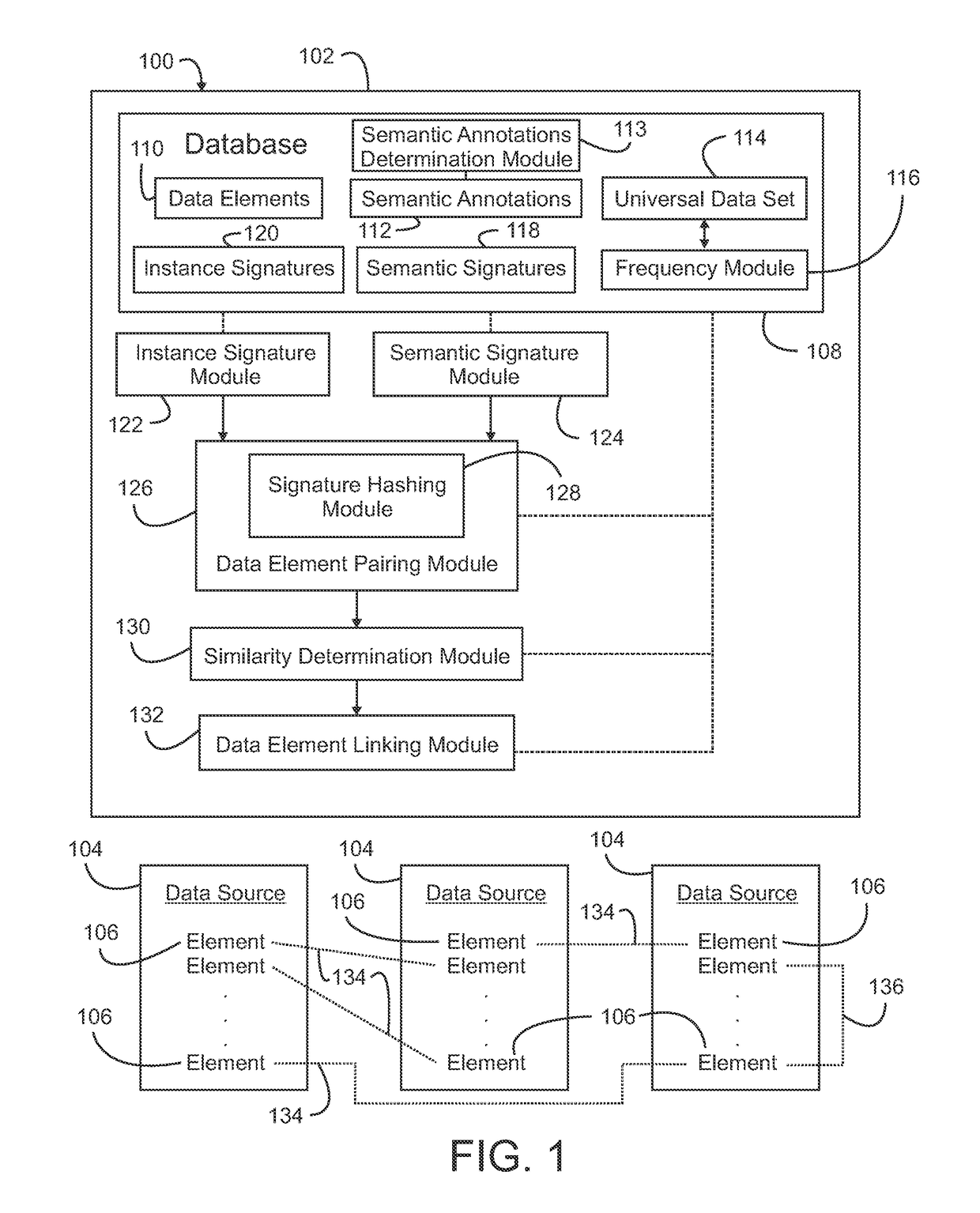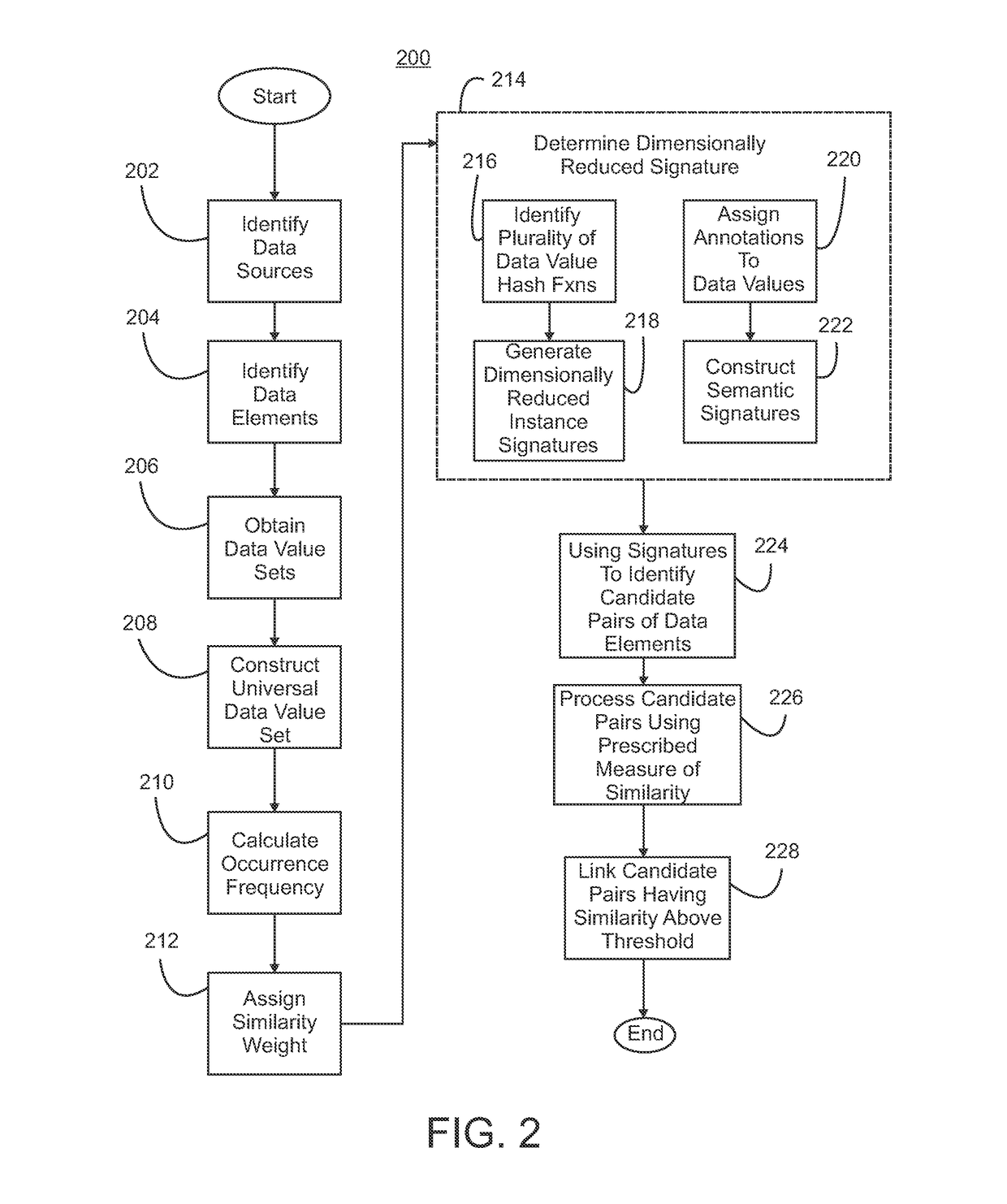Linking data elements based on similarity data values and semantic annotations
a data element and similarity data technology, applied in the field of data management and data linking, can solve the problems of limiting the number of data sources to be linked, the inapplicability of standard analytic techniques that assume complete access to the whole data, and the limited scale of existing linking systems
- Summary
- Abstract
- Description
- Claims
- Application Information
AI Technical Summary
Benefits of technology
Problems solved by technology
Method used
Image
Examples
Embodiment Construction
[0022]Referring initially to FIG. 1, an exemplary embodiment of a system for linking data elements derived from data sources 100 is illustrated. The system includes a data element linking computing system 102 that is in communication with at least one and preferably a plurality of data sources 104. Suitable computing systems include computers and processors within a single domain as well as distributed computing systems. These systems include the processors and software applications required to perform the functions of the data element linking computing system. Suitable data sources include collections or repositories of data, preferably in a computer or machine readable format. These data include structured data such as a relational database and semi-structured data such as an extensible mark-up language (XML) document. Each data source comprises at least one and preferably a plurality of data elements 106. A given data element represents a subset of the data contained in its data ...
PUM
 Login to View More
Login to View More Abstract
Description
Claims
Application Information
 Login to View More
Login to View More - R&D
- Intellectual Property
- Life Sciences
- Materials
- Tech Scout
- Unparalleled Data Quality
- Higher Quality Content
- 60% Fewer Hallucinations
Browse by: Latest US Patents, China's latest patents, Technical Efficacy Thesaurus, Application Domain, Technology Topic, Popular Technical Reports.
© 2025 PatSnap. All rights reserved.Legal|Privacy policy|Modern Slavery Act Transparency Statement|Sitemap|About US| Contact US: help@patsnap.com


